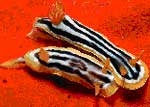Warmer temperatures are believed to influence the sex of turtles.
New research from Duke University (USA) shows that female turtles are more likely to produce eggs, even before their sex is established.
This finding may explain why many animal species, beyond turtles, have temperature-dependent sex determination. Researchers discovered that the number of “germ cells”—precursors to eggs that embryos carry—increases when incubation temperatures are higher. In fact, they found that these germ cells play a role in causing the embryos to develop into females.

The research team found that 31 degrees Celsius is the optimal temperature for producing more females.
“Temperature-dependent sex determination is not just a mechanism. Higher temperatures seem to affect sex determination in increasing ways through various types of cells within the embryos,” said study author Blanche Capel, a Professor of Cell Biology at Duke University School of Medicine.
Meanwhile, researcher Boris Tezak, a co-author of the study, noted that the abundance of germ cells appears to promote the feminization process. This is because the temperature that produces females also increases the number of germ cells. A higher number of germ cells is known to control female development in fish.
“A female that hatches with more germ cells will likely be more reproductively viable. This enhances the turtle’s reproductive capacity to carry more eggs. We have linked the reproductive pathway of females to the increased number of germ cells. If this makes female turtles more fit for reproduction, it may help explain why temperature-dependent sex determination persists,” Tezak explained.
As global temperatures continue to rise, the question arises: What will happen to turtles and other temperature-sensitive reproductive species? The research team indicated they will examine how rising temperatures affect germ cell populations.
To address these questions, Tezak carefully nurtured clutches of red-eared slider turtle eggs obtained from a breeder in Louisiana. The eggs were incubated in plastic containers filled with a humid medium, kept at a constant temperature in the laboratory. An incubator set at 26 degrees Celsius produced more males, while 31 degrees Celsius was the optimal temperature for producing more females.
When examining one of the eggs under very bright light, the embryos that were incubated at higher temperatures were noticeably larger. These embryos also exhibited more activity within the eggs.
“We hypothesize that there is a ‘hot point’ in temperature. There is a short window where you get a large number of germ cells and then start to see a decline,” Professor Capel stated.





















































